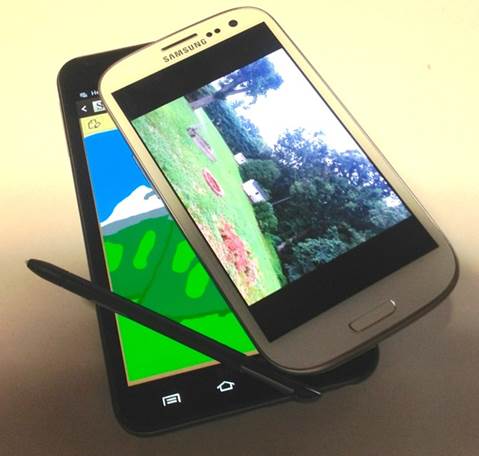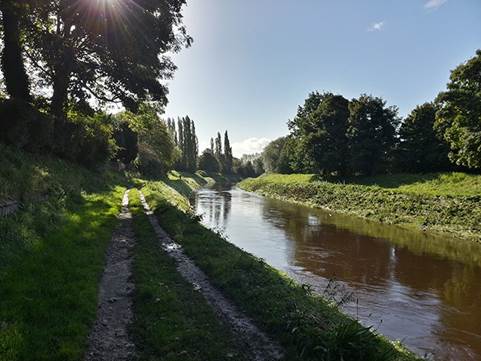Based on what we have known about the
similarity of the Note II and the Galaxy S III, would it be a shock if both of
them had nearly the same camera? Thanks to a little help from Supercurio, we
have studied and discovered the two phones are using the same rear camera
module (known in the code as s5c73m3). Yes, they both use a resolution of 8MP
(3,264x2,448), f/2.6 aperture and 3.7mm focal length in the images, while
allowing 1080p video capture. The front-facing cameras are similar: they utilize
maximum resolutions of 1.9MP resolution and are capable of 720p video
recording. (Warning: they default at 1.3MP, which is 1,280x960. 1.9MP setting
provides a resolution of 1,392x1,392 pixels). But the two devices can be best
friends on hardware; there may be a few small differences in firmware -
particularly because the Note II has additional features that have not provided
in the GS III yet.

The
Note II was also the winner in the management of dynamic range, delivering the
best contrast and producing the colors naturally in the shadows.
So before going into the performance, let’s
discuss what the device offers. First, it has the new "best face"
mode, which is the version of Samsung’s Scalado Rewind: it captures five group
images and allows you to choose the most beautiful face. This is very
convenient if Bob closed his eyes in the first photo and Julie was making an
odd face in the second - choose the most beautiful face of each person and
combine all in a wonderful finished product. There is also the "low
light" mode, in which, as the name implies, is to provide improved
performance in that field (in low light). In addition to these new additions,
you will find the same settings in the GS III, such as HDR (with strong and
normal settings and a choice that you do not have on the GS III), panorama,
share photos , many scene modes, burst shot, macro focus, white balance, ISO,
metering and exposure adjustment.

Both
the Samsung Galaxy S III and Samsung Galaxy Note are using the same rear camera
module.
We have always been impressed with the
performance of Samsung’s camera because the company seems to be more interested
in quality than the number of pixels. While both of the Notes perform
admirably, the next-generation version gave us better results than the original
version a bit. The new Note created more natural colors - its predecessor
generated the images that were often over-saturated and diluted colors in
daylight. You'll also see a little more details in the next version. The Note
II was also the winner in the management of dynamic range, delivering the best
contrast and producing the colors naturally in the shadows. As for how to
compare the Note with the Galaxy S III - it seems to be similar to some extent;
as expected, the images were incredibly similar and any differences that were
due to firmware processing were minor. The LED flash on the Note II was
significantly better than the original Note, which provides plenty of light and
more color saturation. (However, when compared to the GS III, it is difficult
to realize any differences between them). The Note II also works well in
low-light shooting, as the new low-light mode does a good job to capture the
photons wandering. However, comparing it with the Note and the GS III ended in
a draw: after capturing a few shots in low light, each side had its own moments
of glory in at least some of the competitions.

A
shot by Samsung Galaxy Note II
As mentioned, the Note II has the ability
to record 1080p video in MPEG-4 format. A piece of quick research on
specifications showed that it uses AVC profile 4.0, has a bit rate of 17Mbps
(the GS III is 17Mbps, while HTC One X is 10Mbps ASUS Padfone is 20Mbps) and
offers a frame rate of 30fps. You are given the option to capture the high
resolution images (3,264x2,176) while shooting the film, but if you wait until
playback to capture those precious images, a number of pixels will be equal
with a number of pixels given from the video. In terms of features, the Note II
introduces the fast-motion (up to 8x) and slow-motion (down to 1/8) recording
modes for the videos. You may not want to get too serious with this feature,
but it is interesting opportunity to create (for example: the fast-motion video
is best accompanied by the Benny Hill theme song). Overall, the video
performance is pretty good: you should feel confident to record family videos
and ignore a camcorder. It has done a good job of recording detailed motion
without getting choppy, and recorded our voices loud and clear. We heard some
strong winds in a slightly windy day, but it could filter out most of the
additional noise out. The only problem we had was with the pan back and forth,
where the images got choppy, almost to the point of causing nausea.